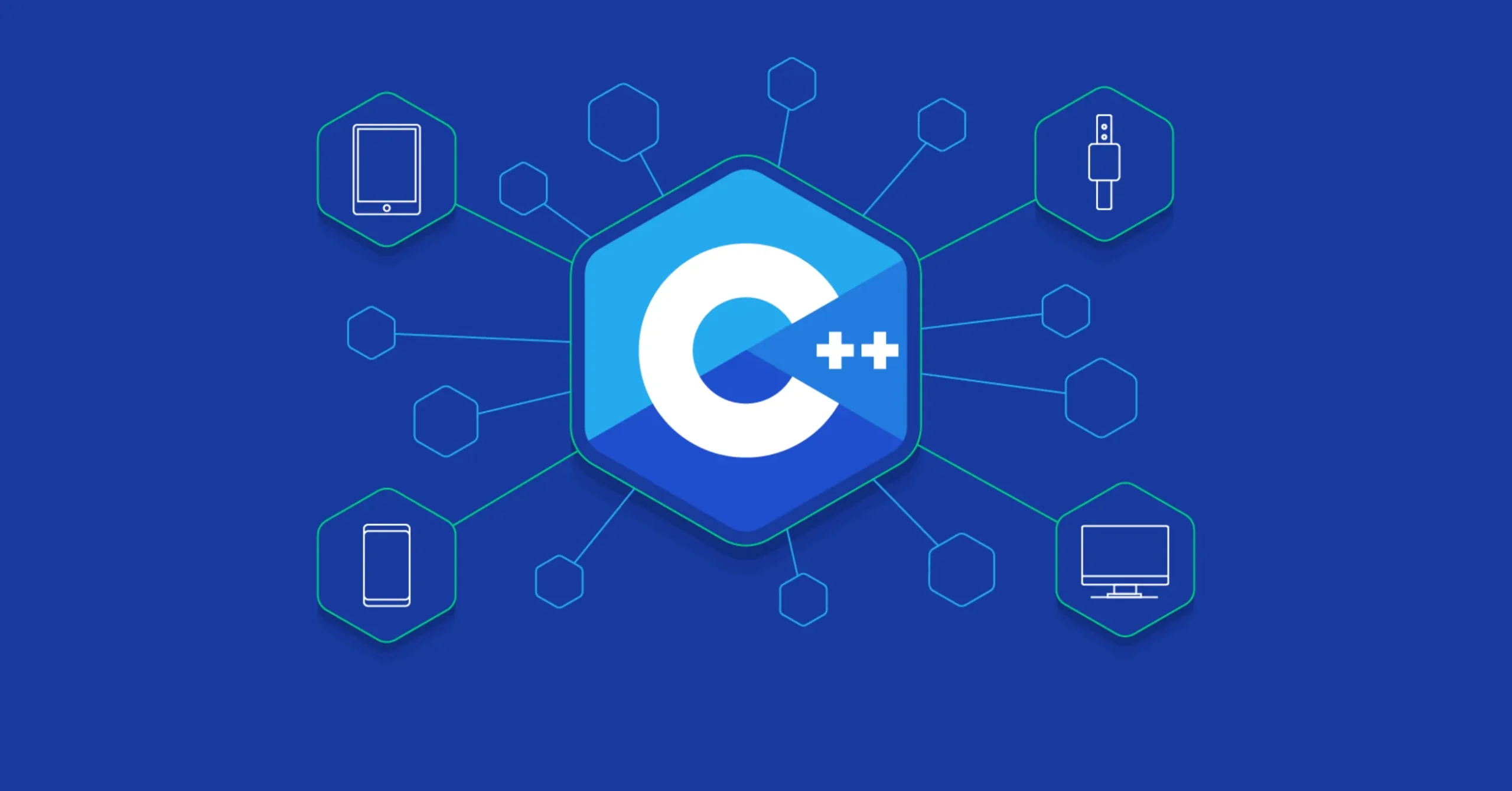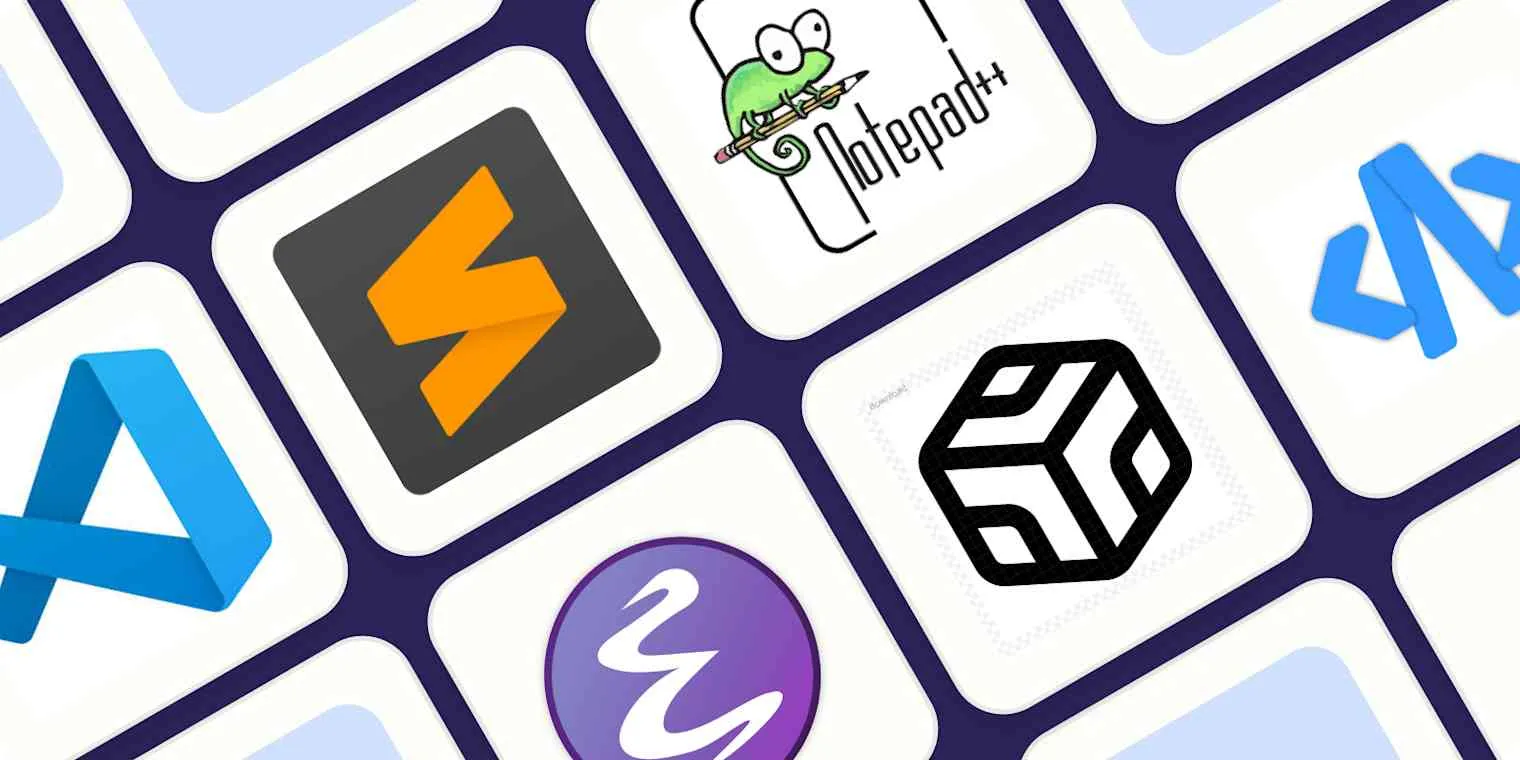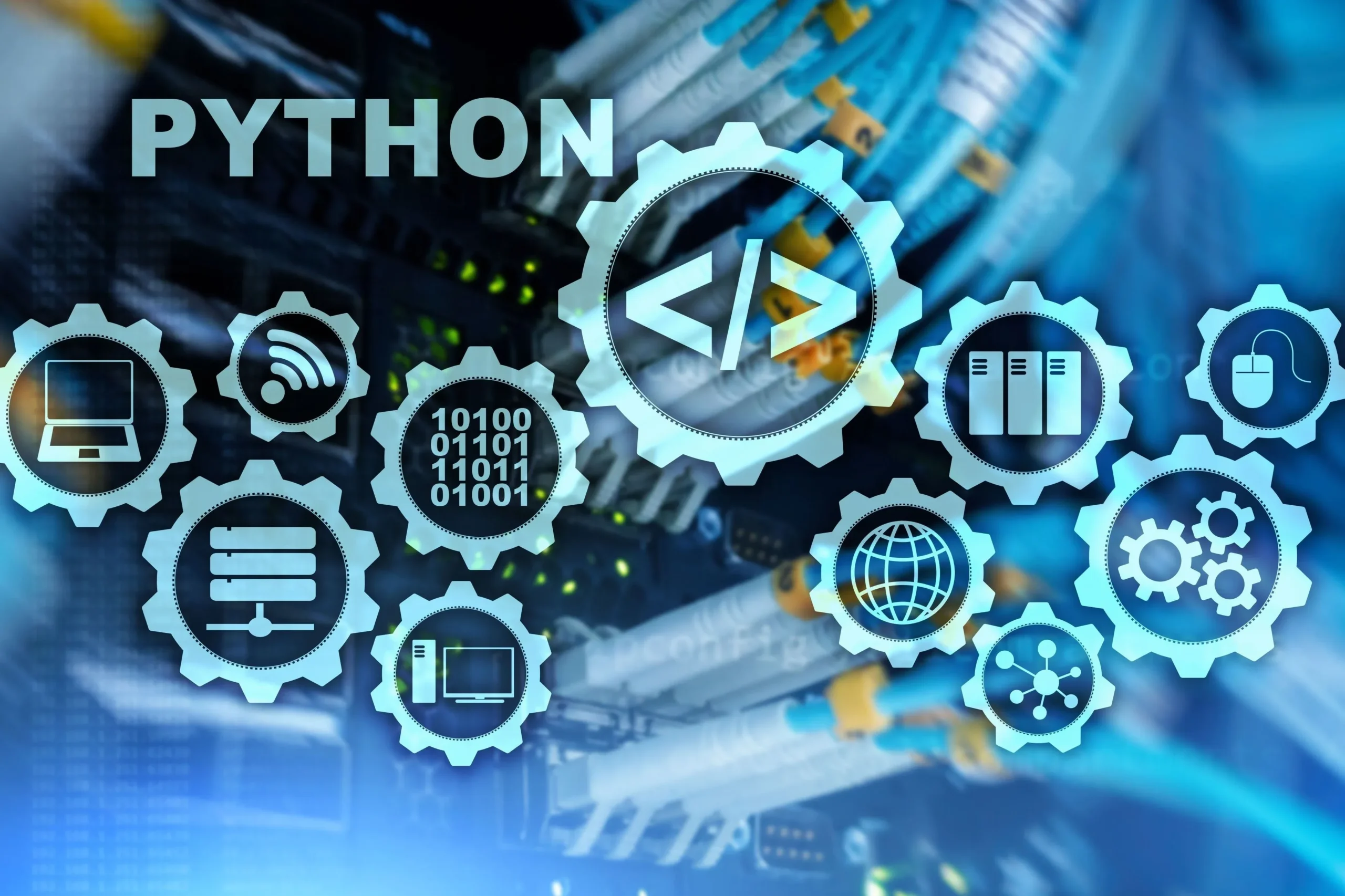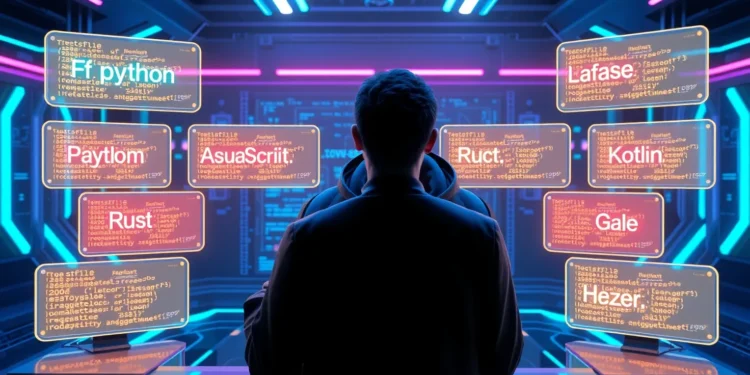In 2024, the tech world continues to evolve at a rapid pace. New technologies, platforms, and frameworks are emerging, making it crucial for software developers and aspiring programmers to stay up-to-date with the most relevant programming languages. Whether you’re just starting your journey or looking to expand your skillset, understanding which programming languages are worth learning is vital for remaining competitive in the industry.
This comprehensive guide will explore 90+ programming languages worth learning in 2024, organized into groups. Each group will consist of 10 languages, and we’ll break down their applications, advantages, and why they are crucial for developers in 2024. So, let’s dive into the most popular, impactful, and versatile programming languages that are essential for modern software development.

The Core Programming Languages Every Developer Should Learn 🖥️
-
Python
Python continues to be one of the most popular and versatile programming languages in 2024. Known for its readability, Python is widely used in web development, data science, machine learning, and automation. Its extensive libraries, such as TensorFlow for machine learning and Django for web development, make it a top choice for both beginners and experienced developers. -
JavaScript
JavaScript remains the backbone of modern web development. It is essential for building interactive and dynamic websites and is supported by all web browsers. JavaScript is also widely used in backend development with Node.js, enabling developers to work with both frontend and backend code using the same language. -
Java
Java is a tried-and-tested programming language, known for its portability and reliability. It remains the go-to language for large enterprise systems, Android app development, and cloud computing. With the release of newer frameworks such as Spring Boot, Java continues to be highly relevant in 2024. -
C++
As one of the oldest programming languages, C++ is still a major player in systems programming, game development, and high-performance applications. Its powerful features, such as memory management and direct hardware interaction, make it ideal for performance-critical applications, including real-time simulations and 3D graphics. -
C#
C# is a popular language for building Windows applications, game development with Unity, and enterprise-level software. Its integration with the .NET framework makes it a strong contender in the world of software development. C# is also growing in cloud-based development, offering versatility across different platforms. -
Ruby
Ruby, particularly when paired with the Ruby on Rails framework, is known for its simplicity and efficiency in web development. Ruby’s elegant syntax and productive environment make it popular for startups and developers building scalable web applications. It continues to have a strong following in 2024, particularly for building quick prototypes and MVPs (Minimum Viable Products). -
Swift
Swift is Apple’s programming language for developing iOS and macOS applications. Swift’s clean syntax and performance advantages over Objective-C make it the go-to language for iOS developers. In 2024, Swift remains crucial for building high-performance mobile applications for Apple’s ecosystem, ensuring that developers stay relevant in the iOS market. -
Go (Golang)
Go, developed by Google, has gained significant traction for its efficiency in developing scalable and high-performance systems. It’s widely used for building backend systems, microservices, and cloud-native applications. Go’s simplicity and speed, combined with its growing ecosystem, make it one of the most promising languages for the future of cloud computing and DevOps. -
PHP
Despite its controversial reputation, PHP remains an integral part of the web development landscape. Powers a significant portion of the web, including popular content management systems like WordPress. With the introduction of PHP 8 and its performance improvements, PHP continues to be a relevant choice for dynamic web applications in 2024. -
TypeScript
TypeScript, a superset of JavaScript, brings static typing to JavaScript and is quickly becoming a favorite among developers. Its strong typing system helps catch errors during development, making it highly desirable for large-scale applications. TypeScript’s integration with popular frameworks like Angular, React, and Vue makes it essential for modern web development.

Emerging Languages and Specializations 🧑💻
-
Rust
Rust is a systems programming language that focuses on safety, performance, and concurrency. It’s known for preventing memory-related bugs while offering C-like performance. Rust is widely used in building high-performance applications, game engines, and even embedded systems. As performance and safety continue to be top priorities, Rust is rapidly gaining popularity among developers in 2024. -
Kotlin
Kotlin, the preferred language for Android development, is growing in popularity due to its compatibility with Java and its concise syntax. Kotlin is ideal for mobile application development and is also gaining traction in backend development. Its growing support in the Android ecosystem and Google’s endorsement ensure Kotlin remains highly relevant. -
Dart
Dart, developed by Google, is primarily used with the Flutter framework for building cross-platform mobile applications. It allows developers to write a single codebase for both Android and iOS apps, making it a powerful tool for mobile developers in 2024. Dart’s performance and ease of use make it an essential language for anyone developing mobile applications using Flutter. -
SQL
SQL (Structured Query Language) remains an essential skill for developers working with databases. As data management becomes more critical across industries, SQL proficiency is a must. In 2024, SQL continues to be the standard for querying and manipulating relational databases in applications, making it vital for backend developers. -
R
R is the go-to language for data analysis and statistical computing. It’s widely used in academia and research and is a favorite among data scientists for building statistical models and performing data visualization. R’s extensive libraries and integration with data platforms make it an essential tool for anyone interested in data science and analytics. -
Elixir
Elixir is known for its scalability and concurrency, making it ideal for building distributed systems and high-performance applications. It’s widely used in building real-time applications, such as chat apps, messaging systems, and IoT applications. Elixir’s growth, particularly in the backend and functional programming domain, makes it highly relevant in 2024. -
Scala
Scala, a hybrid functional and object-oriented programming language, is widely used in big data processing frameworks like Apache Spark. It’s a go-to language for developers working with big data, machine learning, and distributed systems. As companies continue to manage large volumes of data, Scala remains an important language for data-centric applications. -
Lua
Lua is a lightweight scripting language primarily used in game development and embedded systems. Its simplicity and flexibility make it a popular choice for building game engines, modding games, and adding scripting capabilities to applications. Lua is also increasingly used in IoT devices and embedded applications, making it a versatile language in 2024. -
Perl
Perl, once a dominant language for web development, is still used for text processing, system administration, and network programming. While it may not be as popular as it once was, Perl continues to have a niche following, particularly in automation, network administration, and bioinformatics. -
Haskell
Haskell, a purely functional programming language, is used for academic purposes, complex algorithms, and software verification. Known for its mathematical purity, Haskell is often used in research, financial systems, and large-scale applications where correctness and reliability are paramount.

Specialized and Niche Programming Languages 🌐
-
SwiftUI
SwiftUI is Apple’s declarative framework for building user interfaces across iOS, macOS, and other Apple platforms. It provides a modern way to build apps with less code and more power. SwiftUI is essential for anyone interested in developing iOS or macOS apps with a focus on UI/UX design. -
VHDL
VHDL is a hardware description language used in electronic design automation (EDA). It allows engineers to model and simulate hardware circuits. For professionals working in hardware design or embedded systems, VHDL is a crucial skill. -
MATLAB
MATLAB is a high-performance language used for numerical computing and algorithm development. It’s widely used in academia, research, and industries such as aerospace and automotive for modeling and simulation tasks. MATLAB’s powerful mathematical toolset makes it indispensable in scientific computing. -
Hack
Hack is a programming language developed by Facebook as a dialect of PHP. It introduces static typing to PHP, making it suitable for large-scale applications. Hack is mainly used in building web applications, particularly within the Facebook ecosystem, making it relevant for backend developers in 2024. -
Objective-C
While Swift has largely taken over, Objective-C remains a staple in iOS and macOS development. Many legacy apps are still written in Objective-C, and understanding it is essential for maintaining and extending older applications. -
Assembly Language
Assembly is a low-level programming language that provides direct access to a computer’s hardware. It’s often used in embedded systems, operating systems, and other performance-critical applications where full control over hardware is necessary. -
Julia
Julia is a high-performance programming language for technical computing. It’s particularly suited for numerical analysis, data science, and machine learning. Julia is gaining traction among data scientists and researchers due to its speed and ease of use, particularly in high-performance computing. -
TypeScript
TypeScript is a superset of JavaScript that adds static types. It’s increasingly popular for building large-scale, maintainable applications. TypeScript’s ability to catch errors early in the development process makes it a preferred choice for JavaScript developers working on complex web applications. -
COBOL
While it’s often considered a legacy language, COBOL is still widely used in banking, finance, and government systems. Many large institutions still rely on COBOL for their backend operations, making it a valuable skill for working with legacy systems. -
Fortran
Fortran is one of the oldest high-level programming languages, still used in scientific computing, weather simulation, and high-performance applications. Its continued relevance in research and academia, particularly for computationally intensive tasks, makes it an important language to learn for specialized fields.

Backend Development and Systems Programming 🌍
-
Shell Scripting (Bash)
Bash and other shell scripting languages are crucial for automating tasks, managing systems, and interacting with the operating system in a highly efficient manner. Bash remains a critical skill for backend development and system administrators, making it highly valuable in 2024. -
Perl
Perl is a versatile language often used for text processing, web development, and system administration. While it has faced competition from other languages, Perl still holds significant value in fields such as bioinformatics, network administration, and automation. -
Ruby
Ruby, particularly with the Ruby on Rails framework, is still one of the top choices for building web applications. Its elegant syntax and focus on simplicity and productivity make it a great option for startups and developers who need to develop scalable web apps quickly. -
Scala
Scala is a statically-typed language that combines functional programming and object-oriented programming. It’s widely used in big data processing, particularly in frameworks like Apache Spark. Scala is an excellent choice for developers working with large-scale data systems and high-performance computing. -
Elixir
Elixir, built on the Erlang VM, is known for its scalability and concurrency, making it ideal for building real-time applications such as messaging apps and IoT systems. It’s a great language for backend developers working on distributed systems and microservices. -
Lua
Lua is a lightweight scripting language often used for embedded systems, video game development, and scripting in various applications. It’s particularly popular in the game development industry due to its simplicity and ability to integrate into game engines. -
Rust
Rust has gained significant popularity in the systems programming world due to its memory safety features without sacrificing performance. It’s used in developing system software, high-performance applications, and in WebAssembly. Rust’s memory management and concurrency capabilities make it one of the most promising languages in 2024. -
Go (Golang)
Go, developed by Google, is designed for building efficient, scalable, and high-performance systems, particularly in cloud computing and microservices. Its simplicity and strong concurrency support make it an essential tool for backend developers focused on cloud infrastructure and web servers. -
Swift
While Swift is mainly used for iOS and macOS app development, its role in server-side development is growing. Frameworks like Vapor allow Swift to be used in building fast and reliable backend systems, making it a valuable skill for iOS developers in 2024. -
Kotlin
Kotlin is a modern alternative to Java, with better syntax and fewer verbose elements. It’s officially supported by Google for Android development and is now being used for backend development as well. Kotlin’s rise is supported by its growing community and Android’s adoption of it.

Mobile App Development 📱
-
Dart
Dart is the programming language behind Google’s Flutter framework, a powerful toolkit for building natively compiled mobile applications for iOS, Android, and the web. Dart’s efficiency and the cross-platform development capabilities of Flutter make it an essential language for mobile developers in 2024. -
Objective-C
Although Swift has largely replaced Objective-C in iOS development, Objective-C remains important for maintaining legacy iOS and macOS applications. Knowing both languages ensures compatibility with older systems while allowing developers to work with Apple’s ecosystem in its entirety. -
Java
Java is still the dominant language for Android development. While Kotlin has gained ground, Java remains widely used due to its stability, long history, and compatibility with the Android operating system. -
C#
C# is the primary language used for mobile game development in Unity. It’s also widely used in enterprise-level applications and has support for cross-platform mobile apps through Xamarin. C#’s versatility makes it a top choice for mobile developers in 2024. -
HTML5
HTML5 is the standard markup language for creating web applications that function on mobile devices. It’s a core language for web developers, and with responsive design becoming more crucial, mastering HTML5 ensures apps work well across all screen sizes and devices. -
CSS3
CSS3 is essential for styling web pages and mobile applications. It’s the cornerstone of web design and user interfaces, making it vital for developers who want to create visually appealing and responsive apps. -
React Native
React Native, developed by Facebook, allows developers to use JavaScript to write mobile applications for both iOS and Android. It’s a popular choice for developers who want to build cross-platform mobile apps with a single codebase. -
Xamarin
Xamarin allows developers to write native Android and iOS applications using C#. It compiles to native code and provides an efficient way to develop cross-platform apps, making it a valuable skill for mobile developers focused on .NET technologies. -
Ionic
Ionic is a framework built on top of Angular, React, or Vue, allowing developers to build cross-platform mobile applications with web technologies like HTML, CSS, and JavaScript. It’s particularly useful for those looking to create mobile apps with web technologies. -
PhoneGap (Apache Cordova)
PhoneGap allows developers to create mobile applications using HTML, CSS, and JavaScript. While its popularity has waned in favor of more modern frameworks like React Native, it’s still useful for creating hybrid apps with a single codebase for multiple platforms.

Data Science, Machine Learning, and Artificial Intelligence 🧑💻
-
R
R is a programming language and environment for statistical computing and graphics. It’s widely used in data science and machine learning for statistical analysis, visualizations, and predictive modeling. R is highly valued in academia, research, and industries focused on data-driven decision-making. -
Python
Python is the go-to language for machine learning, data analysis, and AI development. Libraries such as TensorFlow, Keras, and Pandas make Python indispensable in the data science community. Its simplicity and vast ecosystem make it a must-learn language in 2024. -
Julia
Julia is a high-performance programming language for technical computing. It is designed for numerical and scientific computing, and it is increasingly popular in data science, machine learning, and high-performance computing due to its speed and ease of use. -
MATLAB
MATLAB is a high-level programming language used for numerical computing, data analysis, and algorithm development. It is widely used in research, engineering, and data science for complex mathematical modeling and simulation. -
Scala
Scala is frequently used in big data environments, particularly with Apache Spark. It’s a functional and object-oriented programming language that excels in data-heavy applications. Its compatibility with Java and ability to process vast amounts of data make it an essential tool for data scientists. -
SQL
SQL (Structured Query Language) is the standard language for managing and querying relational databases. Proficiency in SQL is vital for anyone working in data management, as it allows for efficient data retrieval and manipulation. -
Haskell
Haskell is a purely functional programming language used for building complex systems, often in academia or research. It’s increasingly used in data science and machine learning for its mathematical purity and ease of creating reliable, bug-free code. -
Prolog
Prolog is a logic programming language often used in AI for solving problems related to databases, reasoning, and natural language processing. Its declarative nature makes it well-suited for knowledge-based systems and AI applications. -
TensorFlow
While TensorFlow itself is a machine learning framework rather than a programming language, it’s built with Python and is essential for anyone working in deep learning and AI. It provides powerful tools to build complex models and deploy them at scale. -
Keras
Keras is a high-level neural networks API written in Python, used for building and training deep learning models. It runs on top of TensorFlow, making it an essential framework for machine learning developers working on AI projects.

Web Development and Scripting 🌐
-
PHP
PHP is a general-purpose scripting language that is especially suited for web development. It powers dynamic websites and content management systems like WordPress. Despite being criticized, it remains a dominant force in web development. -
Node.js
Node.js allows developers to use JavaScript on the server-side, enabling JavaScript to be used for both frontend and backend development. Its event-driven architecture makes it ideal for building scalable network applications. -
Ruby on Rails
Ruby on Rails is an open-source framework that simplifies web development with Ruby. Known for its efficiency and speed in building web applications, Ruby on Rails continues to be an essential tool for web developers in 2024. -
Vue.js
Vue.js is a JavaScript framework for building user interfaces and single-page applications. It’s lightweight, flexible, and easy to integrate with existing projects, making it a popular choice for frontend developers. -
React
React, developed by Facebook, is one of the most widely used libraries for building user interfaces. Its component-based structure allows developers to create dynamic, reusable UI elements, making it essential for modern web development. -
Angular
Angular is a TypeScript-based web application framework developed by Google. It is a comprehensive framework used to build large-scale, dynamic web applications, and its integration with TypeScript enhances code quality and maintainability. -
ASP.NET
ASP.NET is a web framework developed by Microsoft for building dynamic web pages, APIs, and real-time web applications. It is commonly used with C# and is an essential tool for developers working with the .NET stack. -
Sass
Sass is a preprocessor scripting language that extends CSS with dynamic features like variables, mixins, and functions. It makes CSS easier to maintain and extend, especially in large-scale web applications. -
Webpack
Webpack is a module bundler for JavaScript applications. It helps manage and optimize assets like JavaScript files, CSS, and images. Learning Webpack is essential for developers working with modern web development frameworks. -
JQuery
jQuery is a fast, small, and feature-rich JavaScript library. Although its popularity has declined in favor of modern frameworks, jQuery remains a critical tool for simplifying HTML document traversal, event handling, and animation.

Game Development and Graphics 🌐
-
C++
C++ is a critical language in game development due to its performance and control over hardware. It is used to build high-performance games and real-time simulations, especially in AAA game development. -
Unity (C#)
Unity uses C# for scripting and is one of the most widely used game engines. It supports both 2D and 3D game development, making it a great option for aspiring game developers in 2024. -
Unreal Engine (C++)
Unreal Engine, with its C++ programming backbone, is one of the most powerful game engines used for developing realistic 3D games. Its robust tools and advanced graphics capabilities make it a top choice for game developers. -
Godot
Godot is an open-source game engine that uses its own scripting language, GDScript. Known for being lightweight and easy to use, Godot is ideal for indie game developers and hobbyists. -
Blender (Python)
Blender is a 3D graphics software used for creating animations, models, and visual effects. It’s highly extensible with Python, which allows developers to create custom plugins and tools within Blender. -
Vulkan
Vulkan is a low-level graphics API that provides developers more control over GPU operations and is ideal for high-performance applications such as video games and real-time simulations. -
OpenGL
OpenGL is an established API for rendering 2D and 3D vector graphics. It is used in many game development environments and is essential for developers working on graphics-heavy applications. -
C# (for Game Development)
C# is also used in game development, particularly for scripting in game engines like Unity. It’s an essential tool for anyone looking to develop interactive experiences, from games to virtual reality applications. -
ActionScript
ActionScript is used for programming applications in Adobe Flash. While its use has declined in favor of HTML5, it’s still relevant for maintaining legacy Flash-based applications or games. -
Shader Programming (HLSL/GLSL)
Shader programming involves writing programs that run on the GPU to render graphics. HLSL (High-Level Shader Language) and GLSL (OpenGL Shading Language) are essential for creating realistic visuals in games and simulations.

IoT, Robotics, and Embedded Systems 🧑💻
-
Assembly Language
Assembly is a low-level programming language used for direct control over computer hardware. It’s often used in embedded systems, firmware development, and real-time applications where performance is critical. -
Verilog
Verilog is a hardware description language used in electronic design automation (EDA). It’s essential for FPGA and ASIC development, making it a must-learn for developers working in the hardware or embedded systems field. -
MATLAB
MATLAB is widely used for numerical computing, simulations, and robotics. Its capabilities for matrix operations and simulations make it an essential tool for engineering, robotics, and automation industries. -
Arduino (C/C++)
Arduino uses C/C++ for programming microcontrollers in various embedded systems. It’s a great tool for hobbyists, engineers, and developers building IoT and robotics projects. -
Rust (for Embedded Systems)
Rust is increasingly being used in embedded systems due to its memory safety features and performance. It’s ideal for building reliable and fast embedded applications. -
F#
F# is a functional-first programming language that is widely used in scientific computing, IoT, and machine learning applications. It’s known for its powerful type system and succinct syntax, making it a great choice for specialized fields. -
C (for Embedded Systems)
C is one of the most widely used languages for embedded systems and microcontroller programming. It’s known for its efficiency and ability to interact directly with hardware, making it critical for real-time systems. -
Python (for Robotics)
Python is used in robotics for tasks such as control systems, simulations, and robotic process automation (RPA). Its simplicity and versatility make it a popular choice in the robotics community. -
Tcl
Tcl is used for embedded systems and testing automation. It’s a scripting language that’s lightweight, making it ideal for embedded environments. -
Lua (for Embedded Systems)
Lua is often used in game development and embedded systems for scripting. Its small footprint and flexibility make it a powerful choice for system-level programming in IoT and robotics.

Data Engineering, Cloud, and DevOps 🌟
-
Terraform (HCL)
Terraform uses HashiCorp Configuration Language (HCL) to define infrastructure in code. It is widely used for managing cloud resources in platforms like AWS, Azure, and Google Cloud, making it crucial for DevOps and cloud infrastructure professionals. -
Ansible
Ansible is an automation tool used for configuration management, application deployment, and task automation. It’s highly popular in DevOps workflows due to its simplicity and effectiveness. -
Docker
Docker is essential for containerization, allowing developers to build, package, and ship applications in containers. It’s one of the most crucial tools for DevOps and cloud-native application development. -
Kubernetes
Kubernetes is an open-source platform for automating the deployment, scaling, and management of containerized applications. It’s a vital tool for anyone working with Docker containers and microservices architecture. -
Bash/Shell Scripting
Bash and shell scripting are still essential for automating tasks, managing servers, and configuring systems. They are vital tools for DevOps engineers and system administrators. -
Puppet
Puppet is an open-source configuration management tool used to automate server administration tasks. It is highly useful in managing large-scale infrastructure in cloud environments. -
Chef
Chef is another powerful configuration management tool used for automating infrastructure. It’s designed to help manage and deploy code across thousands of servers, making it critical for cloud engineers. -
Python (for DevOps)
Python is extensively used in DevOps for scripting automation, managing cloud resources, and configuring servers. It’s versatile and has a strong ecosystem of libraries that make it invaluable in the DevOps world. -
CloudFormation (AWS)
AWS CloudFormation allows developers to define infrastructure as code for AWS cloud services. It’s used in DevOps for automating the setup of infrastructure and services in the cloud. -
Google Cloud SDK
Google Cloud SDK provides developers with tools to interact with Google Cloud services, making it a critical tool for DevOps engineers working with Google Cloud Platform (GCP).

In 2024, the world of programming is more diverse and dynamic than ever before. With the ever-expanding landscape of technology, software development, data science, AI, cloud computing, and mobile applications, it’s crucial to stay adaptable by learning the programming languages that are shaping the future.
The languages we’ve explored in this article — from the core, widely-used languages like Python and JavaScript to niche technologies such as Rust, Haskell, and Terraform — are all crucial in their respective fields. Whether you’re working on backend systems, mobile apps, machine learning, data science, or DevOps, each of these languages brings something unique to the table, helping developers tackle the complex challenges of tomorrow.
Learning multiple languages broadens your skill set, enhances your versatility as a developer, and allows you to solve problems more efficiently. In 2024, the demand for well-rounded developers who can work across different platforms and technologies is higher than ever.










